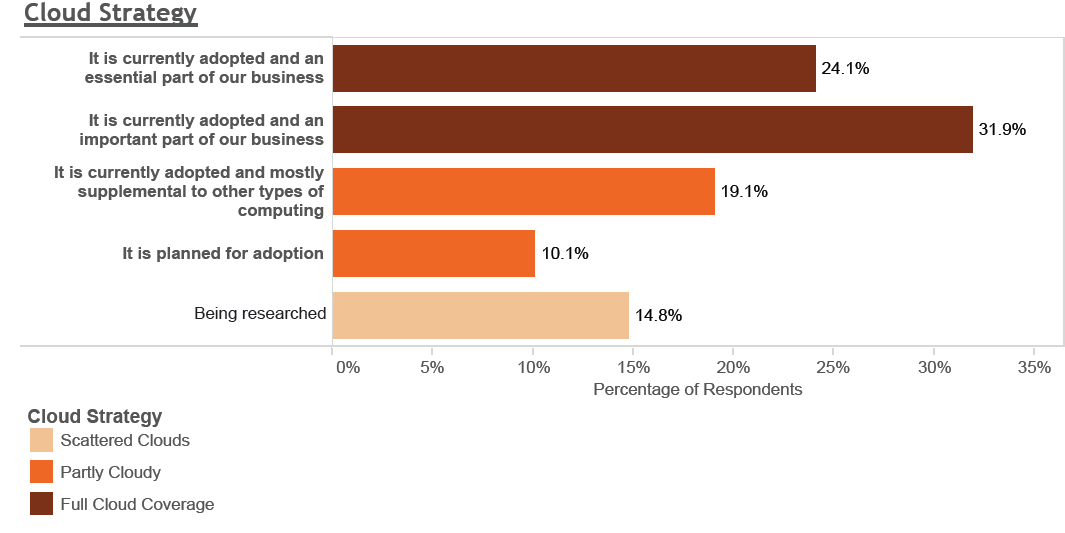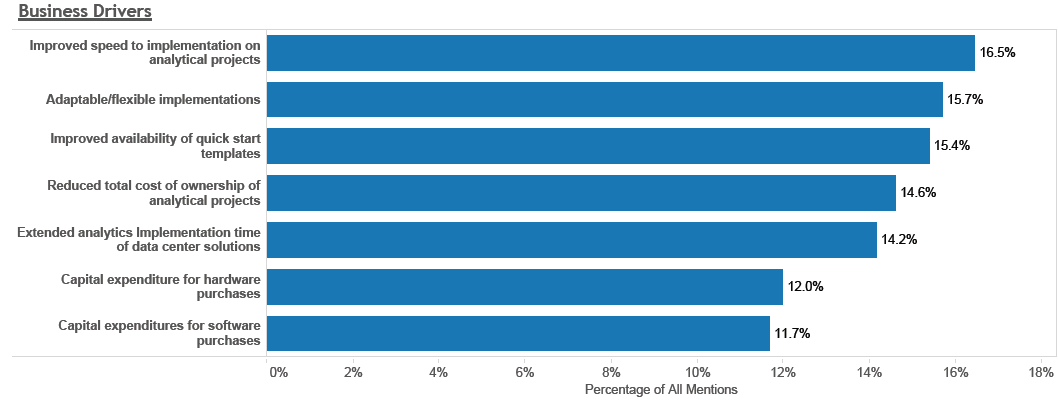EMA: Why Cloud Analytics Are Poised to Take Off
These days, many organizations, including Tableau, run their entire business in the cloud. Yet cloud-based analytics has not gained traction nearly as fast as cloud-based apps. But that may soon change.
In January, Enterprise Management Associates (EMA), a technology and business research firm, conducted an end-user study to take a pulse on the state of analytics and business intelligence in the cloud. The report lists several reasons why cloud-based analytics is poised to take off:
1. It's Becoming Mainstream
Use of cloud analytics is growing. More than half (56%) of those surveyed use analytics in the cloud and feel it is an essential or important part of their business. Many organizations are well beyond the pilot phase. In fact, more than 40% of surveyed organizations have more than five projects associated with cloud analytics.
Here’s a look at the data from EMA’s research:

2. Business Users Are Leading the Charge
It’s people in lines of business, not IT, who are spearheading this change. Business leaders find cloud analytics attractive because these platforms can be set up in minutes and quickly deliver business value.
Here’s how the EMA data breaks down:

The top reason for choosing cloud analytics is the short time to implementation (16.5%), followed closely by the desire for flexibility (15.7%).
More than half of those surveyed received funding from sources outside of the IT department budget. Sales, finance, human resources, and marketing tend to be the influencers in these projects.
Sales analytics (19.3%) was the most common project goal. Other popular goals include reducing operational cost (15.1%), and marketing analysis (identifying cross-selling and upselling opportunities; 13.1%).
3. It's Favored over On-Premise Solutions
In the past, people assumed implementing a cloud-based platform required some compromises in functionalities and features. These days, cloud-based platforms lead in all areas: total cost of ownership, time to implementation, ease of adoption, functionality, and technical distribution.

How Tableau Customers Are Using Cloud-Based Analytics
We’re encouraged by the findings of this research because it confirms what we’ve known: Cloud is becoming an increasingly important part of an organization’s data strategy. Since we launched Tableau Online in 2013, we've seen many successful implementations by our customers. Here are several use cases:
1. Grow business and improve client relationships
Many small business owners need to share insights with multiple clients but don’t want to maintain their own server. So they choose cloud analytics, which allows them to efficiently share information with clients and enhance the value of their projects.
Shelter Island Risk Services, a small consulting firm focused on risk management, turned to Tableau Online to share insights with clients for improved risk management. According to Ira Skop, a partner consultant, the interactivity and the rich visualizations provided by Tableau Online amazed clients and “[helped] them in their decision-making.” (See the full interview.)
2. Give employees the data they need to do their jobs
Success in every industry hinges on operational efficiency and customers satisfaction. On a day-to-day basis, success comes with each employee working as effectively as possible. Making data available to employees so they can see how their actions impact business goals is a sure way to help them stay connected to their work and to the progress of the business.
Jetsuite, an award-winning private plane charter company, is doing this really well. Since the company implemented Tableau Online, the habit of looking to data to make decisions has caught on at every level of the organization, including at the most senior rank. (See the full interview.)
“The first thing I do in the morning when I wake up is to pull my email, and there are three [Tableau] reports,” says JetSuite president Keith Rabin. “They’re the three critical metrics of our business.”
3. Create a single view of customers
Some business owners want to personalize their customers' experiences, but don't have the whole picture of what each customer wants and needs.
The Hattiesburg School District in Mississippi is committed to developing tailored education plans that address the needs of individual children. In the past, this goal was nearly impossible to achieve because all the student information lived in disparate spreadsheets scattered across systems.
With Tableau Online, school administrators can now analyze all student data in one place. The change, says superintendent James Q. Bacchus, helps the district “address the particular needs of not only groups of children, but individual children.” (See the full interview.)
If you haven’t yet, you can try Tableau Online for free.



